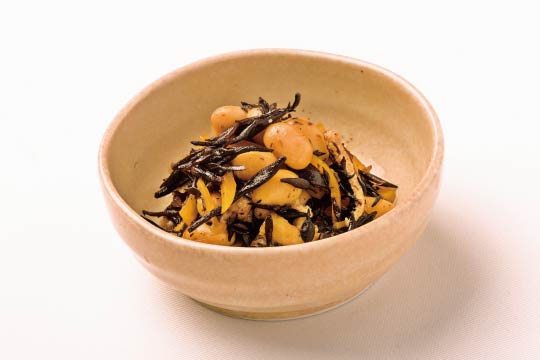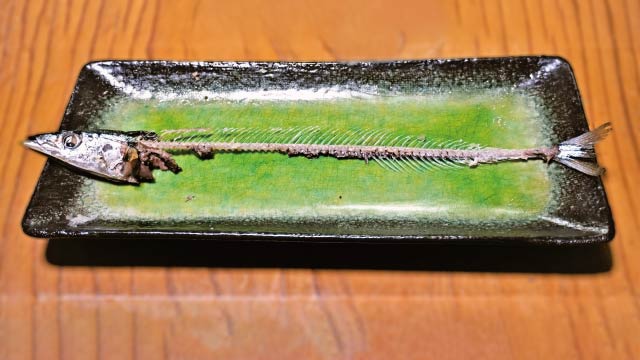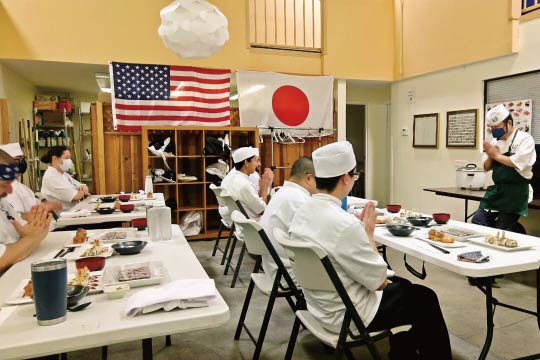News & Blogs
In this blog, we touch on diverse topics about Japanese food cultures, practices together with the culinary secret, TREHA®, and its important role in the Japanese food industry. We hope our blog helps you obtain in-depth knowledge of the secrets and science behind Japanese cuisine, shared from our kitchen, to yours.
Today, we would like to present an interview with Chef Andy Matsuda, CEO and Chief Instructor of Sushi Chef Institute (SCI) in Torrance, California. The interview took place on August 26th, 2021.
Chef Andy founded Sushi Chef Institute (SCI) to pursue his goal to foster culinary professionals who understand and prepare Japanese-style sushi outside of Japan in 2002. SCI has trained more than 1,800 sushi chefs actively working in 35 countries, including the US, Netherlands, Denmark, Hong Kong, Taiwan, and Argentina.
With the mission of "inspiring the world with the essence of traditional Japanese cooking skills and knowledge,” Chef Andy is actively engaged in professional training, sushi catering services, workshops, consultation for opening restaurants to the graduates and public. His goal is to nurture the Japanese traditional sushi culture and educate professionals who relay the tradition onward.
At the age of 20, Chef Andy took a backpacking trip through 16 nations, including the European countries, the US, Canada, wanting to see the development of sushi culture outside of Japan. He discovered Los Angeles had the most advanced sushi culture through his journey. After training to be a sushi chef in Japan, Chef Andy moved to the US at the age of 25 and witnessed a high demand for sushi chefs and shortage in the US, driving him to establish the SCI. In addition to running the school, Chef Andy leads the sushi and Japanese cuisine team on the Holland America Line’s cruise ships as a member of the Holland America Line Culinary Council® consists of eight experts. Chef Andy was named among "the 100 Japanese people the world respects" (Newsweek Magazine Japanese Edition) in 2007. Subsequently, in 2019, the Ministry of Agriculture, Forestry and Fisheries of Japan appointed Chef Andy to be "Japanese Cuisine Goodwill Ambassador."
In 2020, Hayashibara Co., Ltd., the manufacturer of TREHA®, announced the sponsorship agreement with Sushi Chef Institute (SCI). Click here for details.
“Shokugaku dietary education is the study of improving people.”
Team TREHA®/Mari: Would you please tell me your future goals and initiatives?
Chef Andy: I want to engage in a dietary education called “Shokugaku 食学,” which refers to the wisdom of eating habits promoting health. In kanji characters, “Shoku 食” meaning “food” or “to eat” consisted of two radicals signifying “human (人)” and “improve (良).” In other words, Shokugaku dietary education is the study of improving people through the right food choices and eating habits.
There are various ways to "make people better" through food. The tie between food and health should be registered first. In the US, retort (processed) food or fast food frequently become meal choices, in addition to many instant foods and deep-fried foods. I would like to see people eating healthier foods.
The Japanese diet is well-thought-out in terms of its effect on health. In addition to plenty of vegetables, fungi including shiitake mushrooms and seaweeds such as kelp are used. It uses animal-based proteins such as meat, eggs, fish, shellfish combined with plant-based proteins. Tofu is an excellent example of plant-based protein. Compared to a meat-centered diet, Japanese cuisine allows the well-balanced consumption of various foods, good for health.
From a culinary point of view, Japanese food is "water-based," primarily using a “simmering” cooking technique. In contrast, Western and Chinese cuisines are "oil and fat-based," frequently using deep or stir-frying cooking techniques. For example, oil is not at all used in Japanese-style salad dressing. Instead, vinegar sauce called Sanbai-zu (an equal part of vinegar, soy sauce, and mirin combined) is often used. When it comes to tempura, it allows the generous consumption of vegetables even though it uses oil (primarily plant-based) for deep-frying. While on the subject, tempura, the world-famous Japanese cuisine, is non-native to Japan. It was introduced from Portugal in the 14th -16th centuries. This naturally low-fat diet also covers noodle dishes such as soba and udon, consumed in Japan for a long time, whereas pasta dishes are high in sodium and oil.
Due to being water-based, Japanese food does not require extra seasonings because the moisture efficiently carries the flavors to our palate. A water-based diet has less oil and therefore fewer calories. I am aware that 70% of adults and 20% of children are overweight today in the US. I want to restrain this by spreading Japanese food.

“Most people complain about fish having bones, even though they don't mind bones in meat such as fried chicken.”
Team TREHA®/Mari: I had never realized traditional Japanese food was a "water-based" diet until you pointed it out. I agree that the Japanese diet is excellent for nutrition and health. After living in the US for more than 20 years, I realized the freshness of seafood improved due to the increasing demand for sushi in the US. I believe this is because chefs, including yourself, raised awareness of Japanese food.
Chef Andy: While it is declining in Japan, demand for fish increases in the US, requiring safe and worry-free fish to eat. I want to ensure that the necessary knowledge to choose, prepare, and consume fish is permeated correctly. I also want to teach things like selecting fresh fish by checking eyes and colors rather than recommending stores to buy fish from.
The funny thing is that most people complain about fish having bones, even though they don't mind bones in meat such as fried chicken. Naturally, fish have bones. I might even say it is discrimination against fish (chuckles). Once I teach them how to eat fish, including efficiently removing bones from fish like Ayu (sweetfish) and pacific saury to reserve edible parts, I believe fewer complaints will be heard.
Speaking of how to eat, I want to teach how to eat Japanese food (including sushi) orderly and pleasantly - maybe some basic manners. For example, sushi and sashimi are not supposed to be dunked into a pool of wasabi and soy sauce, or wasabi should be used at a small amount to complement sushi or sashimi. I hope teaching etiquette will help consumers find Japanese food more enjoyable.

“I train my students to be grateful for nature. I teach this over and over until the concept sinks in them.”
Team TREHA®/Mari: Speaking of manners, I am concerned that fewer children are interested in learning how food arrives on the table, unaware of their fortunate circumstance to receive it.
Chef Andy: In the SCI class, we use the Japanese words "Itadakimasu (I humbly receive the meal)" before meals and "Gochiso sama (I appreciate everything related to the meal)" after meals.
A greeting, "Itadakimasu," contains “Itadaku,” referring to “hunting." It means killing fish, killing pigs, killing cows, picking vegetables - humans fetching ingredients from nature. Therefore, I train my students to be grateful for nature. I teach this over and over until the concept sinks in them.
Another greeting, "Gochiso sama," after meals, is a word to show thankfulness and respect to nature for nurturing the ingredients. The term also extends to those involved in every supply chain process until the meal is served on the table. They bred livestock, cultivated crops, delivered the ingredients, and prepared meals. If desired to be a chef of Japanese cuisine, a trainee should fully understand and appreciate the hard work done by others. SCI teaches the student the genuine meanings of "Itadakimasu" and "Gochiso sama" and uses them daily.
Team TREHA®/Mari: I look forward to hearing excellent outcomes from your initiatives. Thank you very much for your time today.

Click here for 'Exclusive interview with Chef Andy Matsuda of Sushi Chef Institute in Torrance, California: 1 of 3.'
Click here for 'Exclusive interview with Chef Andy Matsuda of Sushi Chef Institute in Torrance, California: 2 of 3.'
Did you find this blog interesting?
Please share it with your friends in the food service industry.
We regularly update the blog about the food culture of Japan, where TREHA® was discovered for culinary applications.
Click here and send us a message to subscribe.
Or hit us up on Instagram @trehalose_sensei!


